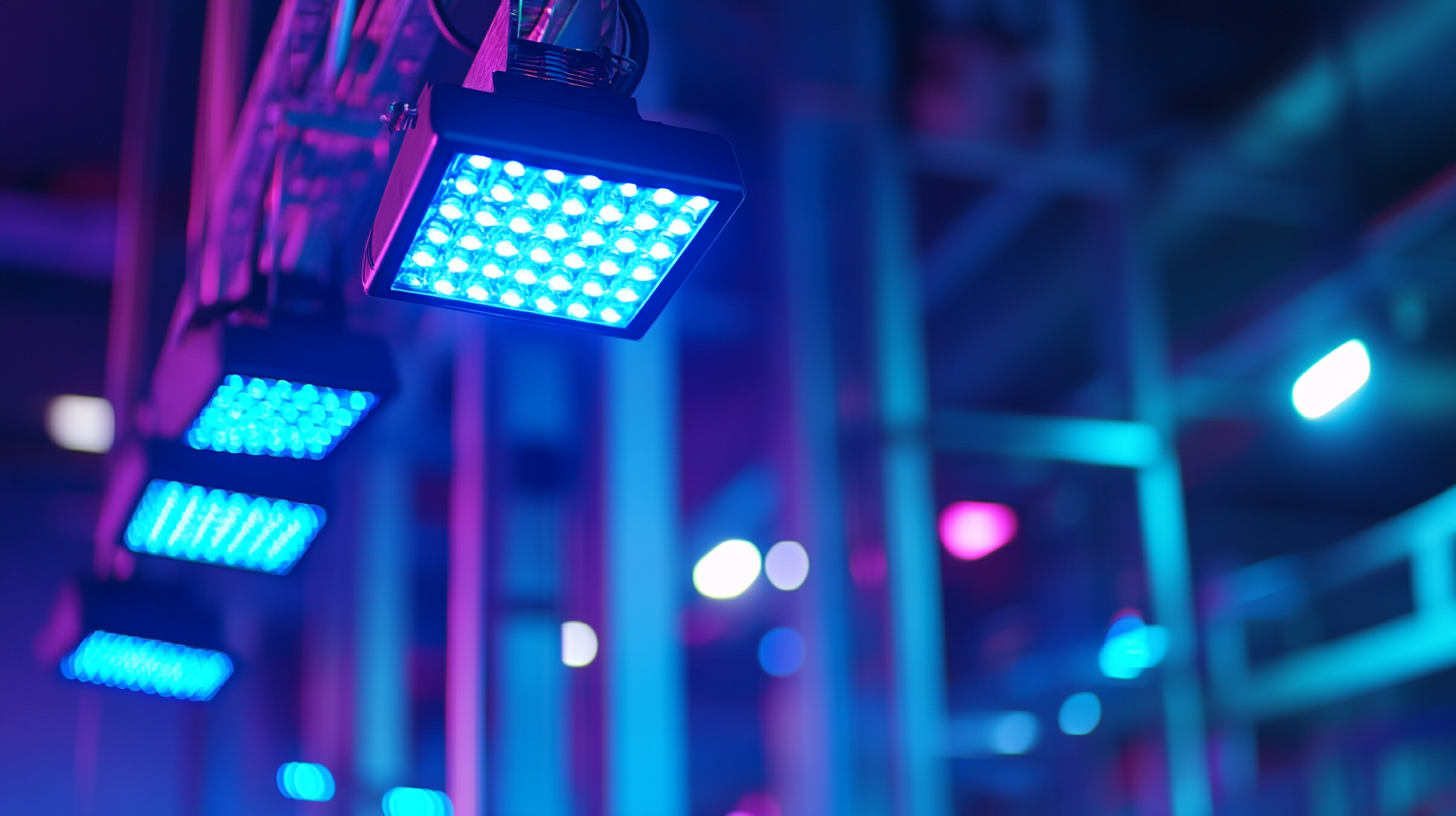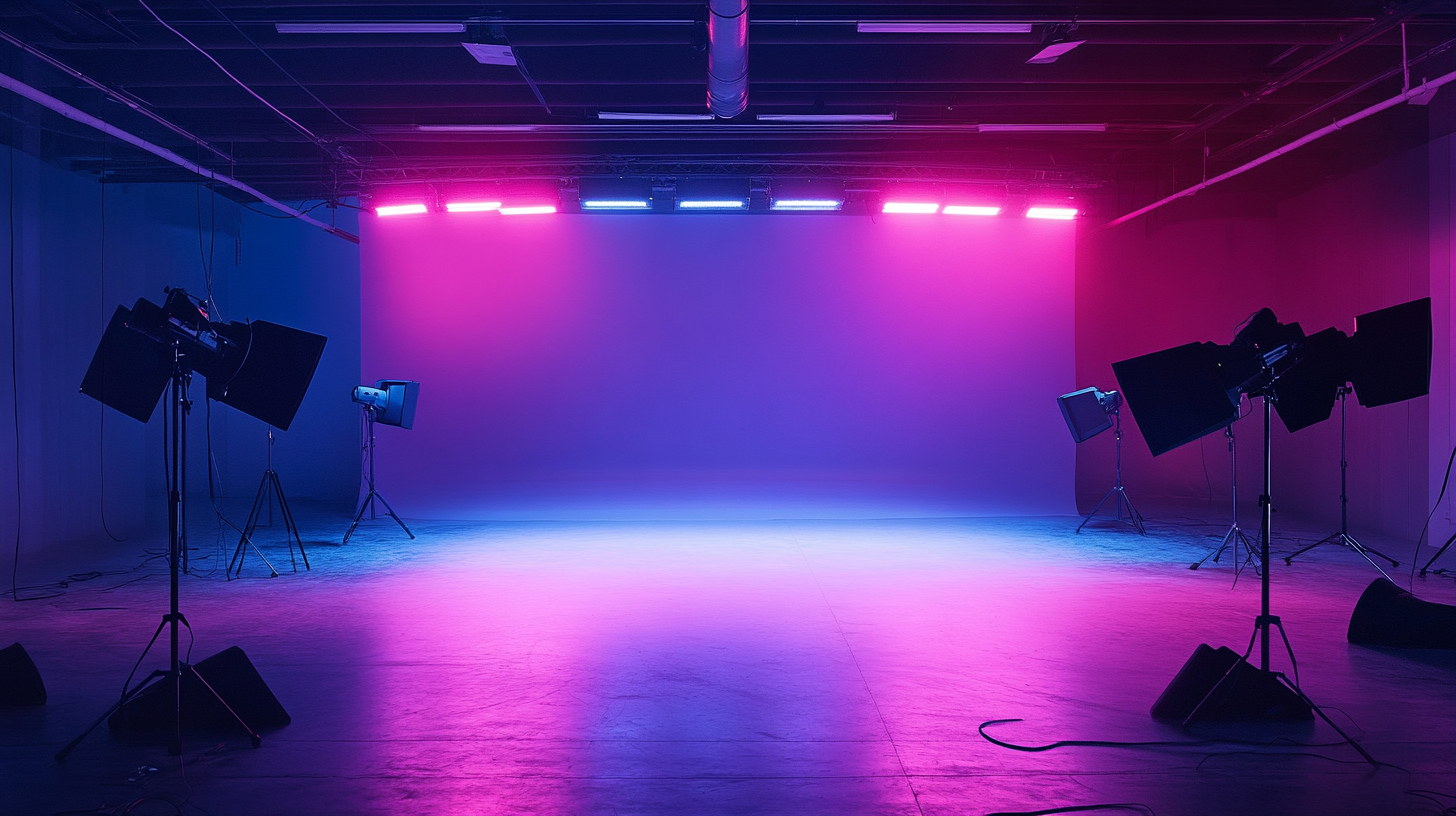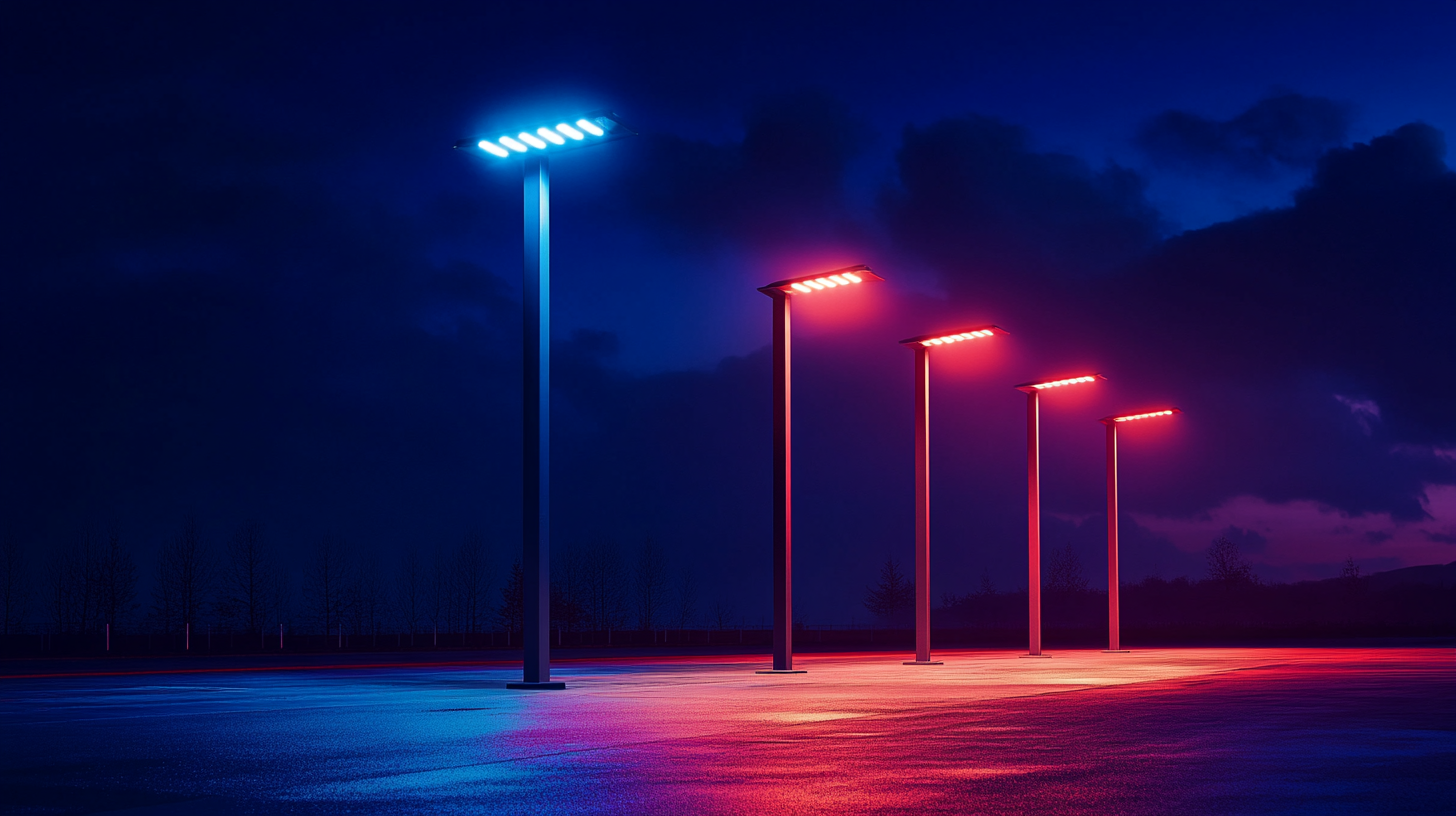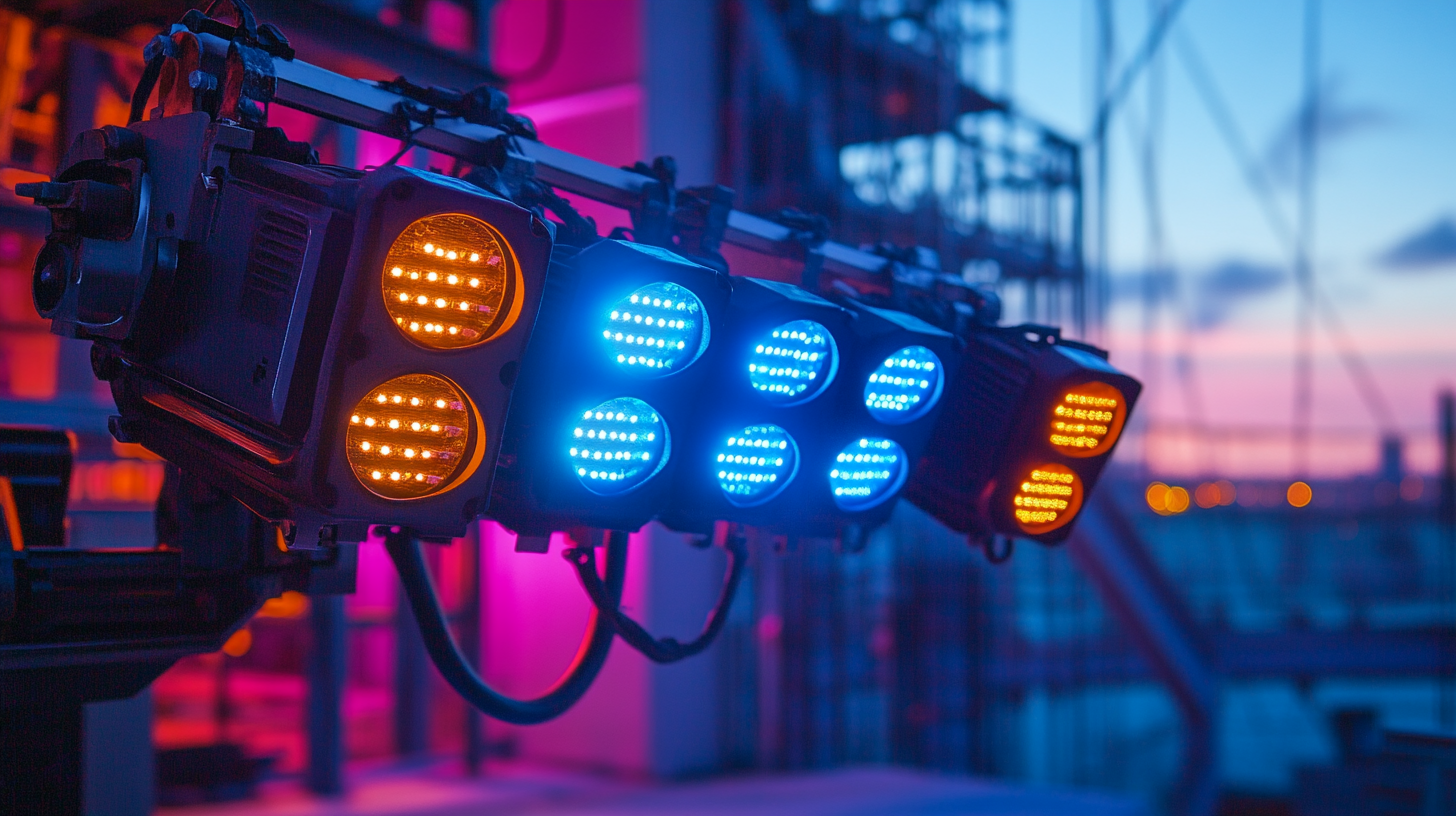Understanding RGBW Floodlights: Innovative Lighting Solutions for Every Application
The emergence of RGBW floodlights has revolutionized the lighting industry, providing an innovative solution that transcends traditional illumination. According to a recent report by Market Research Future, the global LED lighting market is expected to reach $105.43 billion by 2025, with increasing demand driven by advancements in smart technologies and a growing focus on energy efficiency. RGBW floodlights, which combine red, green, blue, and white LEDs, have gained prominence for their versatility and ability to create dynamic lighting effects that enhance aesthetics in various applications, from commercial spaces to urban environments.
In addition to their vibrant color performance, RGBW floodlights contribute significantly to lower energy consumption, making them an eco-friendly choice in the evolving landscape of sustainable lighting solutions. A study by the U.S. Department of Energy highlights that LED technology, including RGBW systems, can reduce energy usage by up to 75% compared to incandescent lighting. As industries continue to prioritize innovation and sustainability, understanding the full potential of RGBW floodlights is essential for anyone looking to optimize their lighting solutions for any application.

The Evolution of Floodlight Technology: From Traditional to RGBW
The evolution of floodlight technology has ushered in a new era of illumination that transcends beyond mere brightness. Traditional floodlights, often limited to a narrow spectrum of white light, are gradually giving way to more innovative solutions like RGBW floodlights, which combine red, green, blue, and white LEDs to provide not only enhanced brightness but also a broader range of colors. According to a recent report by MarketsandMarkets, the global LED floodlight market is expected to reach $11.19 billion by 2025, highlighting the increasing demand for versatile lighting solutions in diverse applications, including commercial, architectural, and outdoor settings. As we delve deeper into this evolution, the integration of smart technologies is playing a pivotal role. For example, in the realm of healthcare, the use of smartphone-based remote assessments, as seen in the Floodlight Open study for multiple sclerosis, illustrates a trend towards more adaptable and responsive lighting solutions. This innovative approach enables healthcare professionals to monitor patients remotely while ensuring that optimal lighting conditions enhance the visibility and clarity of assessments. Industry analysts suggest that the adoption of smart floodlight technology in healthcare settings can significantly improve patient outcomes by providing better control over lighting environments, which is crucial for accurate diagnostics. Moreover, RGBW floodlights are not just limited to aesthetics; they also contribute to energy efficiency. By using a combination of colors to achieve desired hues, these floodlights can reduce energy consumption compared to traditional lighting systems. The U.S. Department of Energy reports that solid-state lighting technologies, including RGBW, can save up to 75% more energy than incandescent lighting while having a significantly longer lifespan. This transition to energy-efficient lighting not only benefits businesses in terms of operational costs but also supports broader sustainability goals, making RGBW floodlights a compelling choice for the future.

The Science Behind RGBW: Understanding Color Mixing and Light Quality
RGBW floodlights represent a significant advancement in lighting technology, allowing for a diverse range of color mixing and enhanced light quality. The addition of a white LED alongside traditional red, green, and blue sources enables these fixtures to produce a fuller spectrum of light. This innovative color mixing not only improves the visual experience but also enhances functionality across various applications, from theatrical productions to architectural lighting.
Understanding the science behind RGBW lighting is crucial for achieving optimal results. Color mixing ratios play a pivotal role. Unlike older technologies that relied on CRT color ratios, RGBW systems require a fresh approach to achieve vibrant and accurate colors. By tweaking the intensity of each color channel, users can unlock a palette that meets their specific needs. This versatility is reflected in newer lighting products designed for various settings, where the integration of advanced spectral capabilities allows for both dynamic and static color presentations.
With the rise of LED technology and the adaptation of traditional color mixing principles, RGBW floodlights have become essential tools in the lighting arsenal. They cater to artists, designers, and professionals seeking to create immersive environments, confirming that these solutions are not just about illumination but also about artistry and innovation in light quality.

Applications of RGBW Floodlights in Residential and Commercial Settings
RGBW floodlights are revolutionizing the way both residential and commercial spaces utilize lighting. With the ability to produce not just white light but a spectrum of colors, these floodlights offer diverse applications that enhance aesthetics and functionality. According to a report by MarketsandMarkets, the global LED lighting market is expected to grow from $81.56 billion in 2023 to $169.41 billion by 2028, illustrating the rapidly increasing adoption of innovative lighting solutions such as RGBW technology.
In residential settings, RGBW floodlights are increasingly popular for enhancing home exteriors and landscapes. Homeowners use these lights to create stunning visual effects for outdoor gatherings or to highlight architectural features, with studies indicating that 60% of homeowners consider outdoor lighting as essential for aesthetic appeal. Moreover, with components like smart home integration, RGBW floodlights can be customized to change colors based on mood or occasion, further increasing their appeal.
In commercial environments, RGBW floodlights serve as a vital tool for branding and promotion. Businesses use these lights to attract customers by illuminating storefronts and signage in vibrant colors, enhancing visibility and customer engagement. According to the Illuminating Engineering Society, effective use of color in commercial spaces can boost customer retention rates by 10% or more. Furthermore, these floodlights can be utilized for events, helping create immersive experiences through dynamic lighting designs. This innovative approach not only elevates the visual impact but also aligns with energy-efficient practices in the modern lighting landscape.

Energy Efficiency and Environmental Benefits of RGBW Lighting Solutions
RGBW floodlights are transforming the way we approach lighting in both residential and commercial applications. One of the most compelling advantages of these innovative lighting solutions is their remarkable energy efficiency. By integrating red, green, blue, and white diodes, RGBW floodlights can create a wide spectrum of colors while utilizing significantly less energy compared to traditional lighting systems. This not only reduces electricity costs for users but also minimizes the overall carbon footprint, making these floodlights an eco-friendly choice.
In addition to energy savings, the environmental benefits of RGBW lighting solutions extend further. Their long lifespan means fewer replacements, which contributes to less waste in landfills. These systems often have lower heat emission levels compared to their incandescent counterparts, reducing the need for additional cooling in enclosed spaces. Moreover, the versatility in color temperature allows for customized lighting experiences, enhancing outdoor spaces without straining local wildlife. This consideration is increasingly important in a world that prioritizes sustainable practices and biodiversity.
As industries and consumers alike seek to embrace greener technologies, RGBW floodlights stand out as an exemplary choice. They unite aesthetic appeal with practical sustainability, making them suitable for a wide array of applications—from illuminating public spaces to enhancing home landscaping. By choosing energy-efficient RGBW solutions, we take significant strides toward a more sustainable future.
Choosing the Right RGBW Floodlight for Your Specific Needs and Project
When it comes to illuminating outdoor spaces, RGBW floodlights offer a versatile and dynamic lighting solution that can cater to various projects and specific needs. Choosing the right RGBW floodlight involves understanding the unique requirements of your setting, whether it’s for residential, commercial, or event purposes. Different lighting effects can dramatically alter the ambiance, so it’s crucial to consider factors such as brightness, color options, and the floodlight's intended use.
For residential applications, you may want RGBW floodlights that allow for customizable color settings to enhance the aesthetic of your garden or patio. For instance, selecting floodlights with a wide range of color options can help create a festive atmosphere for gatherings or holidays. On the other hand, for commercial projects, durability and energy efficiency are often paramount. Here, it’s advisable to choose floodlights designed for extended use, which can withstand outdoor conditions while minimizing energy consumption.
When looking for the perfect RGBW floodlight, also assess the control options available. Some models offer app-based controls, enabling you to adjust settings directly from your smartphone. This feature is particularly beneficial for event planners or businesses that frequently change their lighting configurations. Ultimately, understanding your specific needs will guide you in selecting the right RGBW floodlight, enhancing both the functionality and visual appeal of any space.






